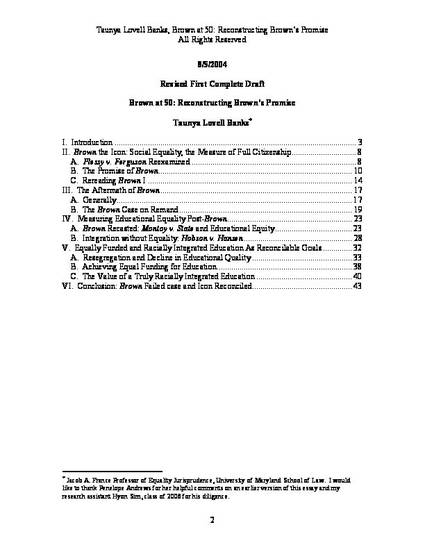
- racial discrimination,
- education equity,
- public education,
- racial integration
Today the measure of equal education for black children often is the racial composition of the school population rather than the quality of education received. Increasingly educational achievement for children of all races is tied to socioeconomic status. Since whites as a group are more affluent than non-whites, race and class tend to get conflated leaving uninformed people to conclude that racial integration alone is the measure of equal educational opportunities for black and other non-white children. Legal scholars writing about equal educational opportunities tend to focus either on ways to achieve racial integration or funding equality. Few scholars explore how to structure new theories of educational equality that acknowledge and squarely address the twin tensions inherent in Brown—racial integration and equal educational opportunity for all children. This country’s experience over the past fifty years illustrates how you can have one without the other. This essay explains how these goals got conflated and why unlinking and more clearly articulating the rationale for each may ultimately lead to the achievement of both goals.
Available at: http://works.bepress.com/taunya_banks/31/
